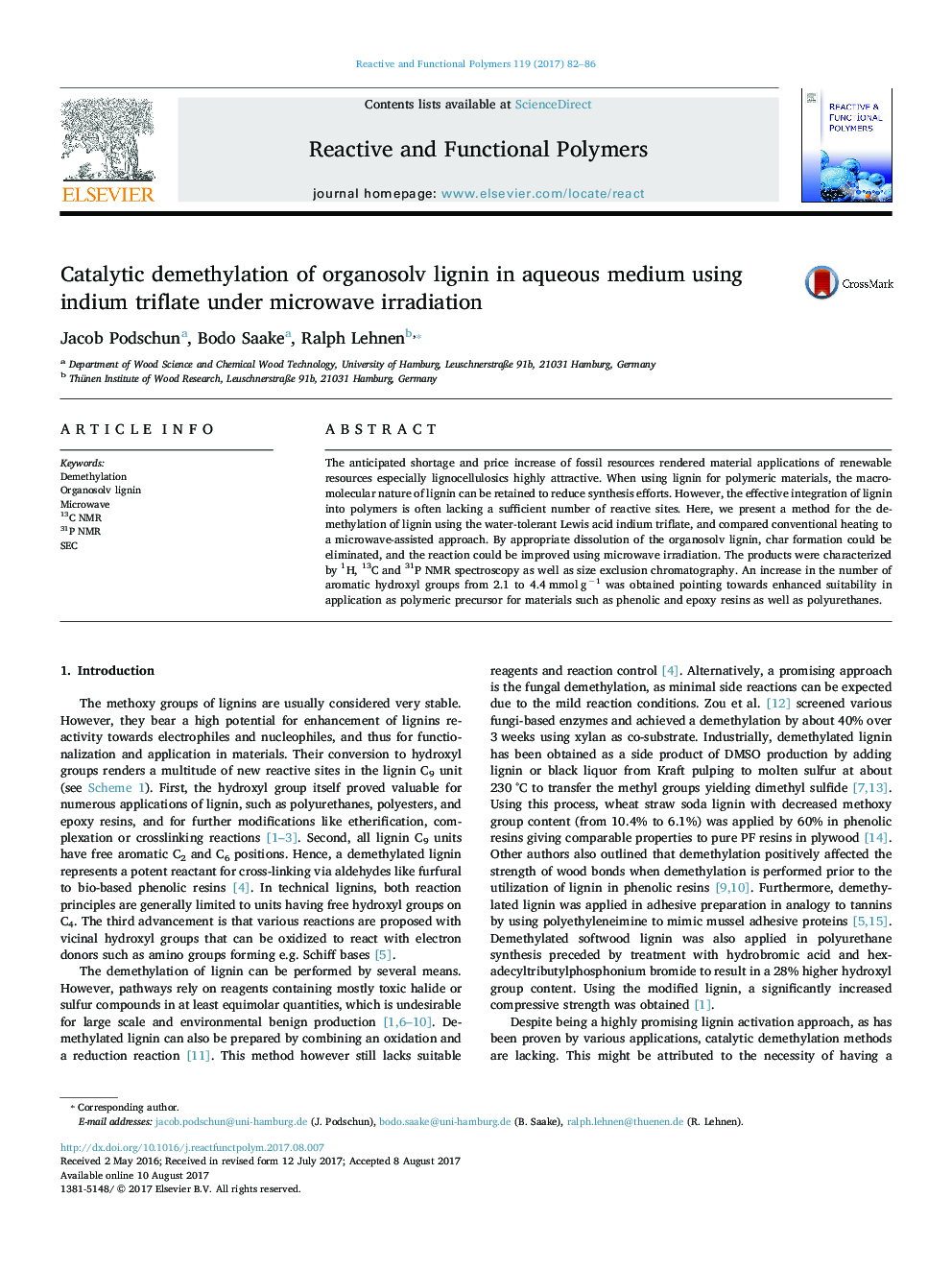| Article ID | Journal | Published Year | Pages | File Type |
|---|---|---|---|---|
| 5209291 | Reactive and Functional Polymers | 2017 | 5 Pages |
The anticipated shortage and price increase of fossil resources rendered material applications of renewable resources especially lignocellulosics highly attractive. When using lignin for polymeric materials, the macromolecular nature of lignin can be retained to reduce synthesis efforts. However, the effective integration of lignin into polymers is often lacking a sufficient number of reactive sites. Here, we present a method for the demethylation of lignin using the water-tolerant Lewis acid indium triflate, and compared conventional heating to a microwave-assisted approach. By appropriate dissolution of the organosolv lignin, char formation could be eliminated, and the reaction could be improved using microwave irradiation. The products were characterized by 1H, 13C and 31P NMR spectroscopy as well as size exclusion chromatography. An increase in the number of aromatic hydroxyl groups from 2.1 to 4.4 mmol gâ1 was obtained pointing towards enhanced suitability in application as polymeric precursor for materials such as phenolic and epoxy resins as well as polyurethanes.
Graphical abstractDownload high-res image (158KB)Download full-size image
